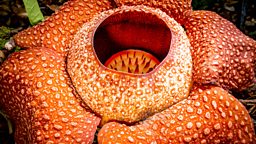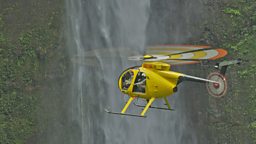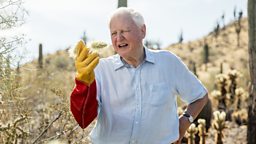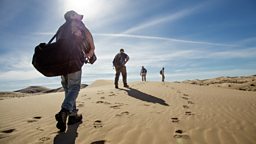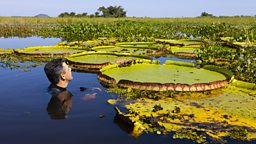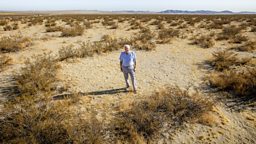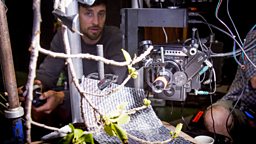Hawaii- the capital of plant endemics… and extinction
By Elisabeth Oakham, Producer for The Green Planet
Nearly half of all the plants found here, around 1000 species, are found nowhere else in the world.
Hawaii is an important place for a programme about the relationship between plants and humans. Nearly half of all the plants found here, around 1000 species, are found nowhere else in the world. Sadly the global plant extinction crisis is particularly acute here. Over 400 of those plants are now threatened with extinction, many because other plants that have been introduced from elsewhere are crowding them out.
Losing any plant species is, of course, a tragedy in itself. But on the island of Maui it also threatens the availability of freshwater for the whole island.
We went to film two prongs of the campaign to save native plants.

There are just 57 of them left.
Hank Oppenheimer, from the Plant Extinction Prevention Program, inspects a holokea plant. There are just 57 of them left. It, like many native Hawaiian species, is able to hold onto rainfall with adaptations like rough textured leaves, fine hairs, and multiple lobes.
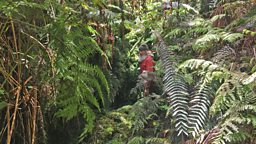
the rainforest acts like a sponge
Hank Oppenheimer in a gulch (a steep, narrow valley) in Maui’s temperate rain forest. Each plant is able to retain a lot of water, and the natural layers of the forest mean that when water drops off the top layer, it is intercepted by plants in the next layer and so on. So the rainforest acts like a sponge, only slowly releasing most of the freshwater for Maui.

its natural pollinators have become so rare
Hank harvests pollen from a male holokea blossom. He will transfer the pollen to a female blossom. He must take the role of pollinator to help the plant reproduce because its natural pollinators have become so rare.
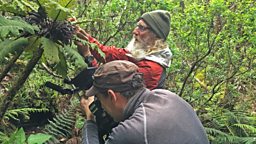
Hank ties tooth floss onto a holokea blossom
Hank ties tooth floss onto a holokea blossom to mark that he has pollinated it, while cameraman Craig Hastings films.
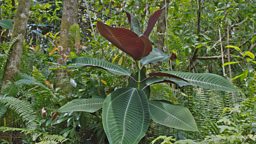
Miconia is native to South America
Miconia is native to South America, but is now spreading through many of Maiu’s special ecosystems, crowding out native plants. Unlike those plants, its broad leaves are shiny, so water rushes off them, down the central spine channel, to the ground.

native plants cannot grow beneath them
Unchecked, miconia forms a monoculture and native plants cannot grow beneath them. So water running off miconia is not caught by other plants, but instead runs straight to the ground beneath, eroding the soil as it rushes away and is lost.

Very few, if any native plants can now grow here.
Cameramen Oliver Mueller and Craig Hastings set up to film miconia in the ‘core’ area of miconia infestation on Maui. Very few, if any native plants can now grow here.

They pull up smaller miconia plants
A ground crew of The Maui Invasive Species Committee (MISC). They pull up smaller miconia plants and ‘spot treat’ bigger ones with herbicide.

This one plant, left alone, could colonise the entire valley
Miconia growing in one if Maui’s many steep sided valleys. Miconia produces thousands of seeds - birds consume the fruit and drop the seeds in these inaccessible places. This one plant, left alone, could colonise the entire valley, crowding out plants which are better at retaining water, and so endangering Maui’s water supply.

Miconia is creating such a threat to Maui’s water supply that MISC are taking extreme measures, such as using helicopters from which to fire herbicide at the plants using paintball guns.
Plant conservationists and invasive species control units hope to preserve the natural ecosystems
Plant conservationists and invasive species control units hope to preserve the natural ecosystems that capture water and control its flow, to the benefit of everything that lives on this island, including people.
